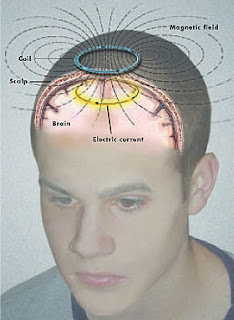(Image Credit: Mzelle Laure via Wikipedia)
Space is big. Its "
vastly, hugely, mind-bogglingly big." It can also be a lonely place as well.
Scientists have been
previously warning that long term trips on the Moon (or towards Mars) may place undo psychological burdens on future astronauts, especially if they can not see Earth.
Since launching astronauts
with their families may not be an ideal solution (although this would resolve the loneliness factor), it may be wise to include Fido in order to help combat the feelings of isolation off world.
While some countries may look to dogs as their next meal, in the west canines are often regarded "as man's best friend."
So whether you are known to befriend the canine (or are indifferent towards it), here are several reasons why this hairy beast may dominate our solar system (as the number one pet that is).
The Love Factor
Regardless of whether an astronaut is stationed on the
outskirts of Callisto or observing the
stars from Mars, living hundreds of millions of kilometers away from the home world can easily make one depressed.
A future colonist will probably feel frustrated with their commanders on Earth (for whatever reasons), and may have a similar attitude towards their crew mates--especially if they are confined to live within
radiation safe houses for extended periods.
In order to help prevent
cabin fever from breaking out off world, allowing dogs to accompany future colonists may be a wise idea, as most canines are known to
show enthusiasm around the presence of their owners, which may help them feel appreciated millions of kilometers from home.
Although other animals may purr or even cuddle, dogs will often shout (or rather bark) their praises at seeing their owners again--a feat that somehow does not get old for our canine friends.
Superior Intelligence
 (Image Credit: Ang on Aclaire.vox.com)
(Image Credit: Ang on Aclaire.vox.com)
Many animals on our planet are known to boast measurable intelligence, but only one species seems to have the discipline to "master" digital technology.
(Suite 101) In a study at the University of Vienna in Austria, dogs used touch screen computers to show that they could categorize photographs. They were trained with treats to select a dog picture over a landscape picture. When they were shown a different set of dog and landscape pictures, they continued to select the dog pictures, demonstrating that they could apply earlier learning to a different situation. Researchers tested further by presenting the dogs with contradictory information to see if they were capable of forming concepts. When shown pictures of an empty landscape and a landscape with a dog, they continued to select the picture with the dog.
While this may seem like a non-factor to pet owners favoring other species, the fact that these canines can be trained to handle technical equipment may make them favorable pets when compared to their feline friends (and perhaps
even pigs).
Safety And Security
 (Image Credit: Kjetil via Wikipedia)
(Image Credit: Kjetil via Wikipedia)
It does not matter whether one establishes large colonies upon Jupiter's
Ganymede or on the Sun baked world
of Mercury, crime (however small) will always be a factor when establishing outposts on another world.
Since its likely that most colonies will probably reside
within biodomes (assuming they are not underground altogether), which means using weapons slinging projectiles (i.e. guns) may not be a good idea, as punching too many holes in the walls could endanger the entire colony.
Even though one could always train the future colony's security force in martial arts, it may be easier to use canines to help enforce the law.
Often seen as a major
deterrent against crime, dogs can help off world security forces
control raging crowds (in case the settlers ever decide to riot), as well
as headbutt potential criminals (in order to avoid severely injuring the would be offender).
The Nose Knows
(Image Credit: Paul167 via Wikipedia)
Although a few worlds like
Callisto and
Titan may provide offer some relief from
space radiation (from our Sun as well
as beyond), many outposts will probably have to create
portable magnetic shields to protect themselves above ground.

While artificial magnetic fields may enable us to survive off world, it may not provide full protection for future settlers which means that cancer rates on
more radioactive worlds will probably be a lot higher than on Earth.
Since importing cancer detecting equipment to every facility (on every moon, planet and asteroid) may be extremely expensive, it may be easier to train (and deploy) dogs to sniff out the cancer instead.
(Nation Geographic) "Our study provides compelling evidence that cancers hidden beneath the skin can be detected simply by [dogs] examining the odors of a person's breath," said Michael McCulloch, who led the research. [...]
"Cancer cells emit different metabolic waste products than normal cells," Broffman said. "The differences between these metabolic products are so great that they can be detected by a dog's keen sense of smell, even in the early stages of disease." [said Nicholas Broffman, executive director of the Pine Street Foundation.] [...]
By scent alone, the canines identified 55 lung and 31 breast cancer patients from those of 83 healthy humans.
The results of the study showed that the dogs could detect breast cancer and lung cancer between 88 and 97 percent of the time.
Using dogs to identify cancer within patients early can go a long ways to helping future doctors treat the disease and hopefully cure it as well.
Conclusion
While it would be silly to suggest that other species on Earth would not ultimately find themselves exported off world across the solar system (
like pigs), the future may see the canine family accompany humanity not only throughout the outer reaches of our solar system, but perhaps into the next star system as well.























![ColonyWorlds[at]Gmail[dot]com](http://img.photobucket.com/albums/v438/hiddennook/ColonyWorlds.png)






